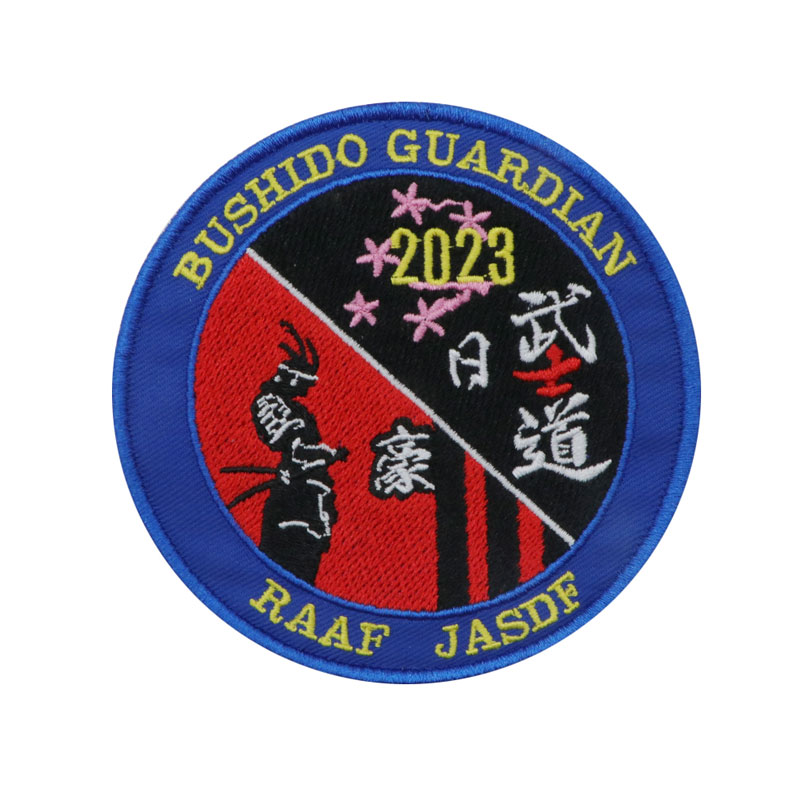Overview of Custom Embroidered Patches
2024-05-24
Custom embroidered patches are versatile and popular items used for various purposes, including branding, decoration, and identification. These patches are made by stitching designs onto a fabric backing, which can then be attached to clothing, bags, hats, and other items. Here’s a detailed overview of custom embroidered patches:
Overview of Custom Embroidered Patches
1. Purpose:
- Branding: Used by companies and organizations to promote their brand and create a professional appearance.
- Decoration: Adds a decorative element to garments, accessories, and other items.
- Identification: Commonly used in uniforms for military, police, scouts, and other organizations to denote rank, affiliation, or achievements.
2. Construction:
- Fabric Backing: Typically made from twill, felt, or other sturdy fabrics.
- Thread: High-quality embroidery thread is used to stitch the design, usually polyester or rayon for durability and colorfastness.
- Backing Options: Various backing options include sew-on, iron-on, adhesive, Velcro, or magnetic.
Key Features
1. Customization:
- Design Flexibility: Virtually any design can be embroidered, including logos, text, and intricate patterns.
- Size and Shape: Available in various sizes and shapes to suit specific needs and preferences.
2. Durability:
- Stitch Density: Higher stitch density enhances the durability and detail of the design.
- Material Quality: Use of high-quality threads and fabrics ensures longevity and resistance to wear and tear.
3. Attachment Methods:
- Sew-On: Traditional method requiring stitching the patch onto the item.
- Iron-On: Features a heat-activated adhesive backing for easy application with an iron.
- Adhesive: Peel-and-stick backing for temporary applications.
- Velcro: Allows for easy removal and reattachment, ideal for uniforms.
- Magnetic: Suitable for non-fabric items or where temporary attachment is desired.
Applications
1. Fashion and Apparel:
- Clothing: Custom patches add unique style elements to jackets, jeans, shirts, and hats.
- Accessories: Used on bags, backpacks, and caps for decoration and branding.
2. Uniforms:
- Military and Police: Denote rank, unit, and achievements.
- Scouting: Used for badges, ranks, and achievements in scouting organizations.
- Corporate: Worn by employees to display company logos and names.
3. Promotional Items:
- Merchandise: Branded patches used as promotional giveaways or sold as merchandise.
- Event Souvenirs: Commemorate events, festivals, or competitions.
4. Sports Teams:
- Team Logos: Display team logos and player names on uniforms.
- Achievement Patches: Awarded for accomplishments and milestones.
Advantages
1. Customization:
- Offers high levels of customization to match specific branding and design requirements.
2. Professional Appearance:
- Adds a polished and professional look to uniforms and apparel.
3. Durability:
- Embroidered patches are durable and can withstand regular wear and washing.
4. Versatility:
- Can be applied to a wide range of items, including clothing, accessories, and equipment.
Disadvantages
1. Cost:
- Custom embroidered patches can be more expensive than printed alternatives, especially for small quantities or complex designs.
2. Application Time:
- Applying sew-on or iron-on patches can be time-consuming compared to other methods like printing.
3. Weight:
- Heavily embroidered patches can be relatively heavy and may not be suitable for lightweight fabrics.
Selection Criteria
1. Design Complexity:
- Consider the level of detail in the design, as more complex designs may require higher stitch counts and thus higher costs.
2. Size and Shape:
- Determine the appropriate size and shape for the intended application and visibility.
3. Backing Type:
- Choose the backing type based on how the patch will be applied (sew-on, iron-on, Velcro, etc.).
4. Quantity:
- Order the right quantity to meet your needs, keeping in mind that larger orders often reduce the cost per patch.
5. Color Matching:
- Ensure accurate color matching to maintain brand consistency, often achieved through Pantone color matching.
Maintenance and Care
1. Washing:
- Follow care instructions for the garment to which the patch is applied. Sewn-on patches are typically more durable in washing machines than iron-on patches.
2. Ironing:
- If using an iron-on patch, avoid direct heat to the embroidered area to prevent damage.
3. Storage:
- Store patches in a cool, dry place to prevent fading and degradation.
Conclusion
Custom embroidered patches are a versatile and durable option for adding unique and professional elements to apparel, accessories, and uniforms. Their customization potential, durability, and variety of attachment methods make them suitable for numerous applications across different industries and uses. When selecting custom embroidered patches, consider the design, size, backing type, and intended application to ensure the best results for your needs.



